Winner’s Circle
Most garden centers try to carry plants their customers will find appealing. Sometimes, customers see plants’ appeal on their own. Other times, it is up to the garden center to offer varieties with proven success and provide information on such plants. After all, you do not want your customers to purchase plants and take them home only to be disappointed with their performance. Successful plants lead to big sales, which lead to happy customers.
Each year, Lawn & Garden Retailer compiles information on the winning varieties from various associations. All-America Selections, All-America Rose Selections, All-America Daylily Selection Council, American Hosta Growers Association, American Ivy Society, Fleuroselect, FloraStar and Perennial Plant Association are all organizations dedicated to providing growers, retailers and consumers valuable information about varieties on the market. Read on to learn more about this year’s winners.
All-America Selections
The purpose of All-America Selections (AAS) is to test new cultivars, inform gardeners about the AAS winners and earn gardeners’ trust in the AAS winners. The independent judges determine winners by each variety’s vigor, productivity and ability to thrive across the country. Trial grounds are sites where side-by-side comparison trials are conducted and supervised by a judge responsible for the growing and methodical evaluation of the varieties. Entries are divided into four different categories: vegetable, flower, bedding plant and cool-season bedding plant.
‘Asti White’ (Goldsmith Seeds). Osteospermum ‘Asti White’, an F1 hybrid white-flowered variety propagated from seed, is the 2008 AAS bedding plant winner. It was chosen for its uniform plant size and flowering time. When flowering, the 2- to 23_4-inch single flowers with blue centers may attract shoppers who prefer daisy blooms. Whether grown in planters on patios or annual gardens, ‘Asti White’ was bred to exhibit heat and drought tolerance during the summer months. Plants may also tolerate light frosts for early spring or fall extended seasons.
‘Skippy XL Plum-Gold’ (Kieft Seeds Holland). Winner of the cool-season bedding plant category is viola ‘Skippy XL Plum-Gold’. It features a golden face, black whiskers and shades of plum surrounding the face or blotch. This variety was tested in southern locations during the winter, and judges found it to be cold and heat tolerant in trial grounds. This AAS winner is recommended for 3- to 4-inch flowering pots or combination planters with bulbs or annuals. Mature plants spread 6-8 inches in full sun.
All-America Rose Selections
All-America Rose Selections (AARS) is an association of growers dedicated to the introduction and promotion of exceptional roses. Every AARS winning rose completes a 2-year trial program in test gardens throughout the United States representing all climate zones. Roses are evaluated on vigor, fragrance, disease resistance, foliage, flower production, growth habit, bud and flower form, opening and finishing color, and stem and overall value.
‘Moondance’. (Jackson & Perkins). This AARS winner has large trusses of creamy-white flowers contrasted with glossy, dark-green foliage. It has an upright, well-branched plant habit. Hardy to Zone 5, ‘Moondance’ exhibits a moderately spicy fragrance. Stem length reaches between 14 and 18 inches, and flower size is approximately 31_2-inches with 25 petals.
‘Rainbow Knock Out’ (Conard-Pyle Co). Hardy to Zone 5, ‘Rainbow Knock Out’ was bred to be more compact and floriferous than its predecessors as well as more resistant to rust and mildew. Winter hardy to Zone 4, this shrub rose may display hips late in the season to complement late fall blooms. Its growth habit its abundant and continuous; it should bloom year round in mild climates. Its stem length is short, and flower size is about 2 inches. With about five petals, flowers are a deep coral pink with yellow centers.
‘Strike It Rich’ (Weeks Roses). Flowers on this rose are a deep golden yellow with red swirls. Flower size reaches up to 5 inches in diameter with 30 petals. Foliage is a deep green with red stems. This bushy plant was bred to be vigorous and offer natural disease resistance. Hardy to Zone 5, ‘Strike It Rich’ has a strong, spicy fragrance.
All-American Daylilies
With the increasing popularity of daylilies and profusion of new varieties, the All All-American Daylily Selection Council (AADSC) addressed this demand. The organization administers a network of test sites throughout North America. These sites perform evaluations based on rigorous scientific methodology. Daylilies are tested for at least two years, with All-American finalists being grown for another 3-5 years in open field conditions before being announced.
‘Lavender Vista’. Recommended for Zones 4-11, ‘Lavender Vista’ blooms an average of 88 days per year. Its blooms are 5-6 inches across with a green throat. The arching foliage is 16-22 inches tall, and the blooms are held just above these uniform mounds. This variety can be used for borders, mass plantings and patio containers.
American Hosta Growers Association
Each year, an increasing number of hosta cultivars are introduced, and it may be difficult for retailers to choose which ones consumers will like the best. That is why the American Hosta Growers Assoc-iation (AHGA) began presenting the Hosta Of The Year Award in 1996. Winners, selected by a vote of AHGA members, are good garden plants in all regions of the country and widely available in sufficient supply in the selection year.
‘Paradigm’ (Shady Oaks Nursery). This hosta from the West Coast was bred to make a large clump about 20 inches high and 46 inches wide. It features bright golden-yellow, heart-shaped leaves bordered by a wide, dark-green margin. The leaves are heavily puckered. Masses of near-white flowers should open in June and July. It prefers morning sun, afternoon shade and a cool, moist spot in the garden. Hosta ‘Paradigm’ was chosen for its color combination and good performance in different regions of the country.
American Ivy Society
The American Ivy Society is dedicated to preserving the genus hedera through education and promotion. The Ivy of the Year program began in 2001 and classifies plants based on the Pierot System of Classification, which divides ivy varieties into eight categories based on leaf shape.
‘Gold Child’. This gold variegated ivy was introduced in 1971 and appeared in the United States in the early 1980s. Its leaves have 3-5 lobes with rounded tips. The variegation is a bright gold margin with a green-gray center. In cooler temperatures, the color is an intense gold, but in warmer weather, the color can fade to butter yellow. Variegated ivies tend to show more winter damage, so care should be used to plant them in a more protected spot in colder climates.
Association Of Specialty Cut Flower Growers
Formed in 1988, the Association of Specialty Cut Flower Growers (ASCFG) works to unite and inform growers in the production and marketing of field and greenhouse cut flowers. Each year, the association tests the latest in cut flowers to determine those that perform well.
‘Limelight’ (Spring Meadow Nursery/Proven Winners). This variety is ASCFG’s Fresh Cut Flower of the Year. Cold hardy to Zone 3, this hydrangea is fast growing; harvesting can start the year after planting. It has long, straight stems that should continue to increase in number each year as the plants mature. The vase life of the immature heads showing some green is 8-12 days, the older heads should be 10-14 days.
‘Hot Biscuits’. This amaranthus is the winner of ASCFG’s Dried Cut Flower of the Year. It has tall, large plumes of densely packed, small, golden-brown flowers. The heads are so large that support should be provided. One pest to watch for is the flea beetle. Although it is a dried cut flower, it can also be used fresh.
Fleuroselect
Each year, Fleuroselect presents Gold Medal honors to new flower varieties. Each of these varieties has been tested by expert independent judges at various trial locations around Europe and was found to be significantly superior compared to other existing varieties.
‘Volumia Rose Bicolor’ (S&G Flowers). According to judges, this begonia has exceptional garden performance throughout the season. Another significant aspect of this variety is its neat and compact habit. ‘Volumia Rose Bicolor’ was bred to work well in container gardens, planters, pots, hanging baskets and window boxes. Flowering should occur in April through first frost. This plant should reach approximately 11 inches tall and spread 13 inches. It has a ball-shaped plant form with dark-green, round-shaped leaves.
‘Sydney Light Blue’ (Kieft Seeds Holland). Delphinium consolida is native to the Northern Hemisphere and the high mountains of tropical Africa. ‘Sydney Light Blue’ features pastel light-blue blooms and was bred to have strong and uniform flowering spikes. It flowers from May to October depending on sowing time. At about 45 inches tall, this variety may be suitable for cut flower cultivation because of its vertical branching.
‘Ellagance Purple’ (Kieft Seeds Holland). Lavandula is an evergreen, bushy shrub with dense spikes of fragrant, deep-blue flowers and narrow, silver-gray leaves. Judges were impressed by the earliness, uniformity, color and floridity of this new variety. ‘Ellagance Purple’ has a compact, uniform plant habit and is free flowering. It should flower from June to October. Its height reaches about 12 inches, and it spreads nearly 10 inches.
‘Bergamo’ (Kieft Seeds Holland). Monarda x hybrida ‘Bergamo’ features distinctive flower heads, each consis-ting of numerous, curving, tubular flowers growing out from a central point. The annual monarda was bred to produce masses of rose-purple flowers from June to August. ‘Bergamo’ has a neat, compact form and reaches approximately 19-25 inches tall. This variety was bred to be mildew resistant.
‘Cappuccino’ (Clause Tézier). Rudbeckia, also known as black-eyed Susan, grow in prairies, dry fields, open woods and along road shoulders. ‘Cappuccino’ demonstrates strong vigor and good basal branching. This variety was bred to produce large, bronze-brown blooms for an extended period of time. It should reach about 31 inches tall. This versatile plant can be used for creating focal points in borders and flowerbeds or containers where it can add height.
‘Fairy Queen’ (Ernst Benary of America). Salvia farinacea is an herbaceous perennial commonly grown as an annual in cold winter areas for its brightly colored flowers and fragrant foliage. This new variety bears multiple spikes of bicolor blue and white flowers on dark flower stems from June to October. A small, white spot on each blue flower is intended to create the illusion of fairy dust. ‘Fairy Queen’ has a bushy, compact habit and thick stems. It reaches approximately 15-16 inches tall.
‘Floral Power’ (K. Sahin Zaden). This new variety features bright-orange faces and red caps on compact, uniform and bushy plants. Viola x williamsiana F1 ‘Floral Power’ may flower year round and reach about 4 inches tall. It was bred to have a long shelf life and be easy to transport. This plant can be used in rock gardens, borders in the garden and patio containers as well as parks and large displays.
FloraStar
FloraStar analyzes plants grown throughout the United States and judges them based on form, disease resistance, fragrance and shipping ability.
‘Margarita’ (Sunflor). Recognized for its early and vigorous growth habit, this variety was bred to have upright stems with numerous flowers per stem. It should fill out a 41_2-inch container early with its dense foliage. Under normal conditions, this pot carnation remains sufficiently compact. ‘Margarita’ requires plenty of water and prefers full sun.
Perennial Plant Association
The Perennial Plant of the Year Program promotes the use of perennials by selecting four varieties from an extensive list of nominations made earlier by association members. Each year, members cast their votes for one of the four selected plants with the following attributes: suitable for a wide range of climate types, low maintenance, easily propagated and exhibits multiple seasonal interest.
‘Walker’s Low’. This nepeta was bred to bloom continuously throughout the season if properly pruned. Hardy to Zones 3-8, this variety prefers full sun but should tolerate shade in hot climates. It prefers a well-drained soil and neutral pH level. ‘Walker’s Low’ features silver-green foliage and dark blue-purple flowers from late spring to frost. It reaches about 36 inches tall with a spread of 30-36 inches. It can be used as a companion plant for early and late blooming plants. Other uses include borders, herb gardens, rock gardens, ground cover and container plantings.
Contact Information
For more information on the winners, direct your inquiries to the following companies:
Clause Tézier
+30 (0) 475 57 57 57
www.clausetezier.com
Conard-Pyle Co.
(800) 458-6559
www.conard-pyle.com
Goldsmith Seeds
(800) 549-0158
www.goldsmithseeds.com
Ernst Benary of America
(815) 895-6705
www.benary.com
Jackson & Perkins
(800) 545-3444
www.jproses.com
K. Sahin Zaden
+31 (0) 172 44 77 77
www.sahin.nl
Kieft Seeds Holland
(360) 445-2031
www.kieftseedsholland.com
S&G Flowers
(800) 323-7253
www.syngenta.com
Shady Oaks Nursery
(507) 835-5033
www.shadyoaks.com
Spring Meadow Nursery
(800) 633-8859
www.springmeadownursery.com
www.colorchoiceplants.com
Sunflor
+31 297 382038
www.sunflor.nl
Weeks Roses
(800) 992-4409
www.weeksroses.com
Editor’s Note: Nepeta ‘Walker’s Low’ photo courtesy of Steven Still of Perennial Plant Association.






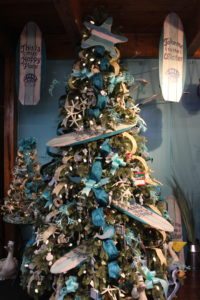
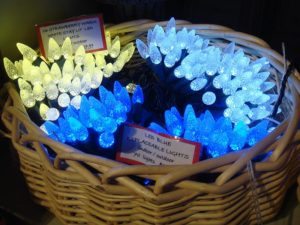
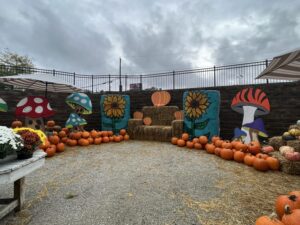
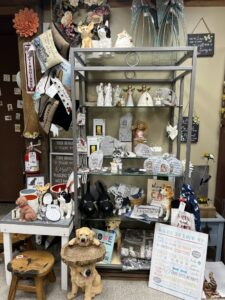
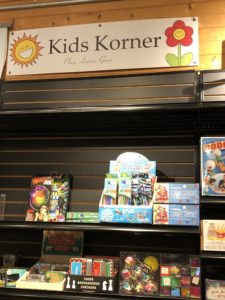
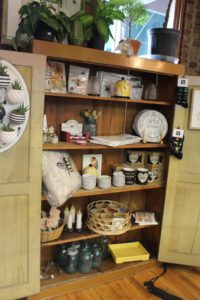
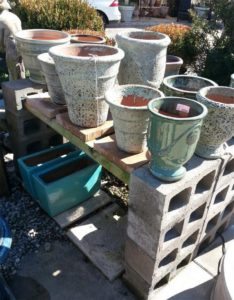
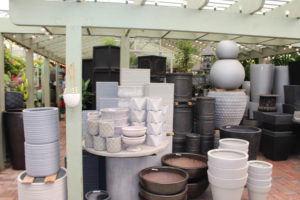

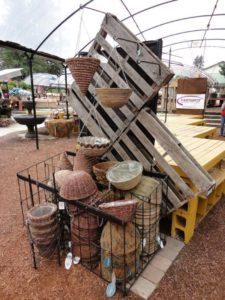
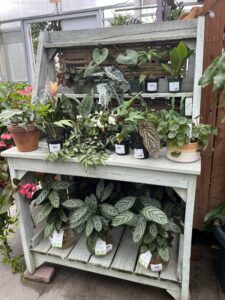
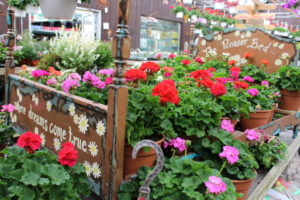
 Videos
Videos





